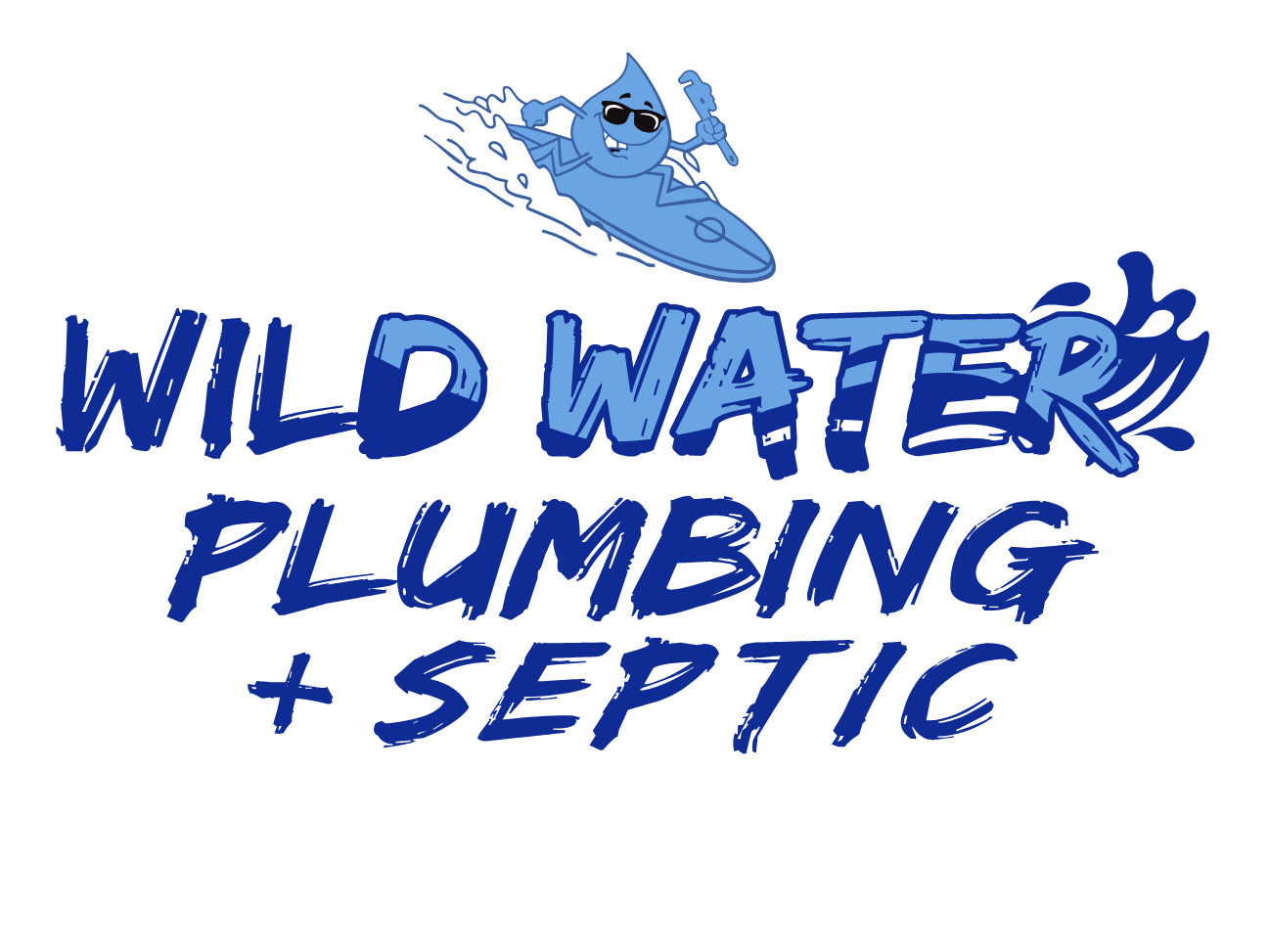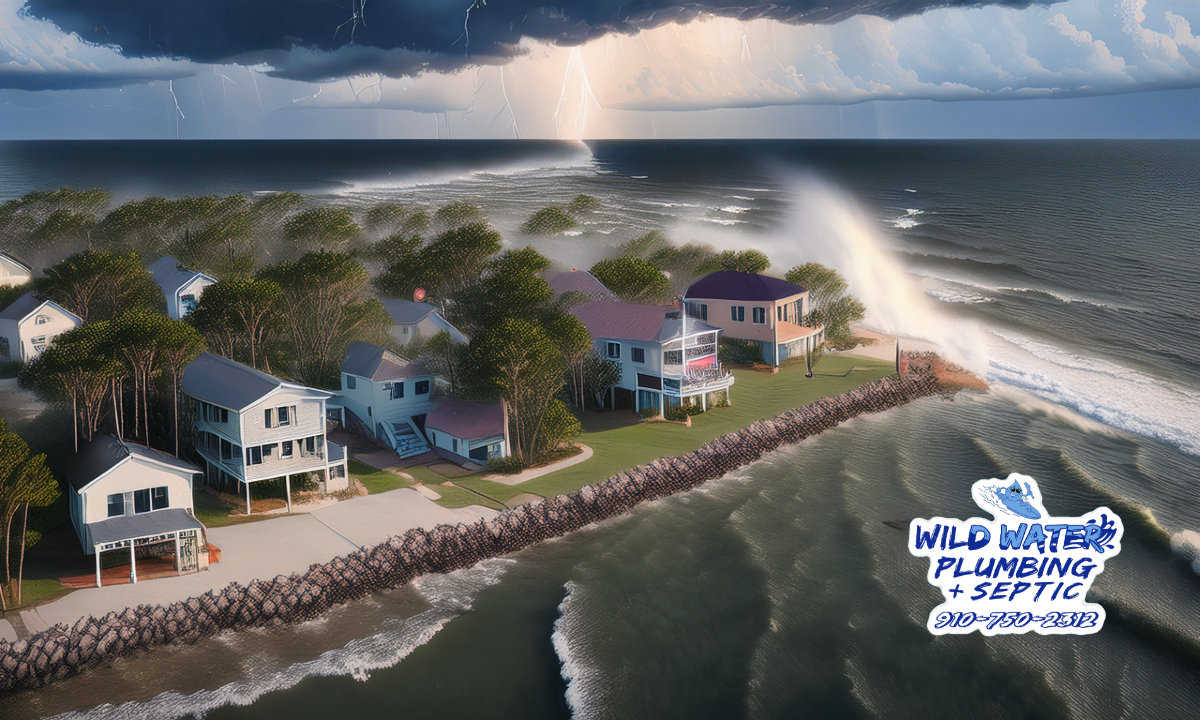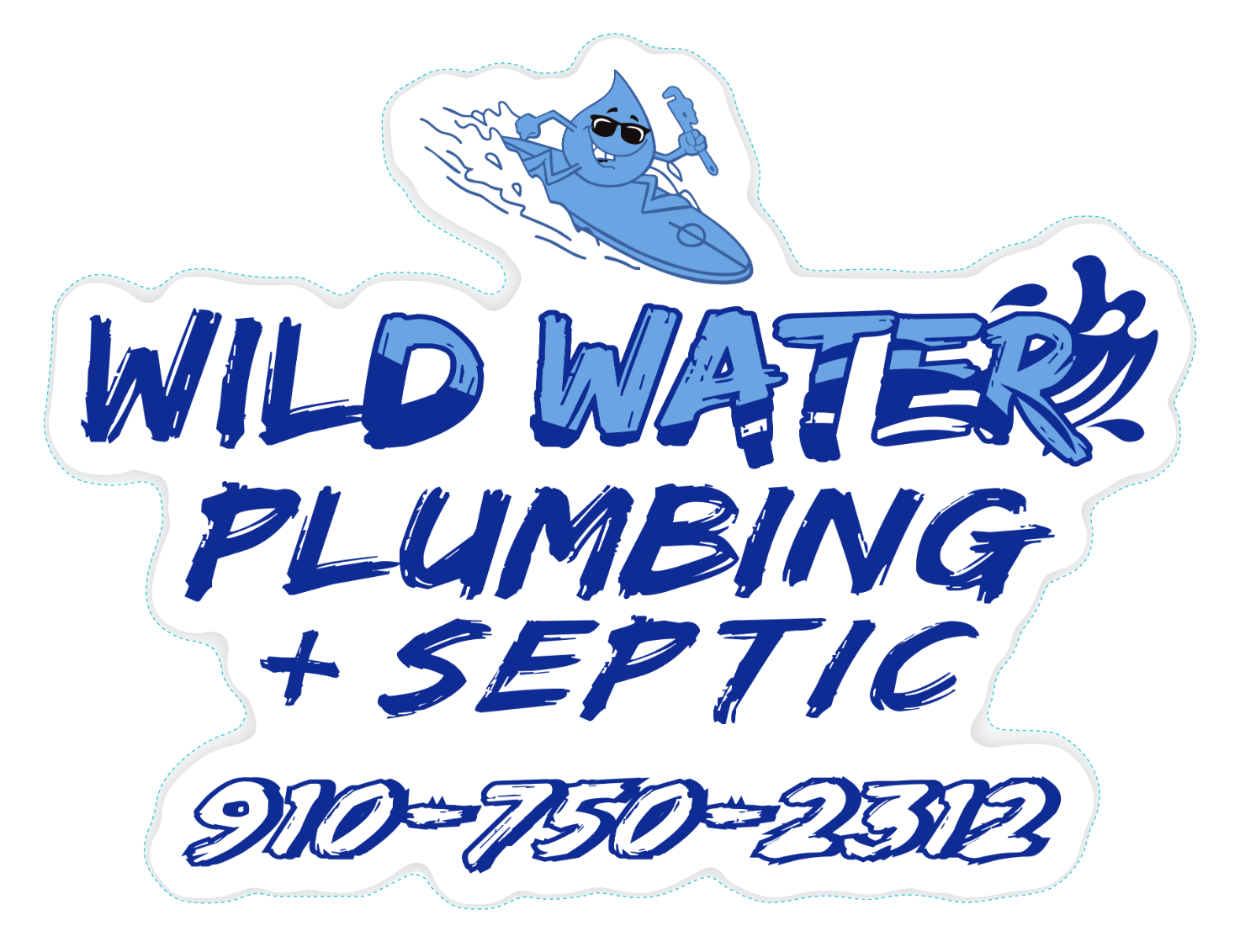By Justin Wilder, Owner of Wild Water Plumbing | Septic Systems
Figure Eight Island Is Paradise, but Saltwater Is Silently Attacking Your Septic System
Figure Eight Island is one of the most exclusive and breathtaking communities in all of coastal North Carolina.
With private beaches, luxury homes, and unmatched views of the Atlantic Ocean, it’s easy to understand why homeowners invest so heavily here.
But as a septic professional, I see a threat most homeowners do not notice until it is too late.
Saltwater intrusion.
Septic systems on Figure Eight Island face extreme environmental pressure from saltwater, brackish groundwater, tidal flooding, and shifting coastal soil.
These conditions quietly damage septic tanks and drain fields, often long before any visible symptoms appear.
If you own a property on Figure Eight Island, your septic system is operating under some of the most challenging conditions on the Carolina coast.
Let me break down exactly how saltwater intrusion works, how it destroys septic systems, and what you can do to protect your home.
Saltwater Intrusion Is the Number One Cause of Premature Drain Field Failure on Figure Eight Island
Every septic system relies on healthy, oxygen-rich soil bacteria to break down wastewater.
But saltwater kills those bacteria.
When saltwater enters the drain field:
- beneficial bacteria die off
- wastewater stops breaking down
- solids get pushed into the trenches
- trenches clog from biomat buildup
- wastewater floods back toward the tank
- you begin smelling odors or seeing standing water
Many luxury coastal homes on Figure Eight Island sit only inches above the tide line, which means the threat of saltwater intrusion is constant even without storms.
Brackish Groundwater Is Always Moving Beneath Figure Eight Island Homes
Figure Eight Island is surrounded by:
- the Atlantic Ocean
- tidal creeks
- marsh systems
- the Intracoastal Waterway
This creates a naturally shallow water table.
Even during normal conditions, brackish water moves beneath the soil.
When brackish water reaches the drain field:
- soil saturates
- oxygen drops
- wastewater cannot filter
- gases escape upward
- drain fields lose all efficiency
Unlike freshwater, brackish water leaves behind salt deposits that further restrict soil absorption.
That’s why homes near Island Drive, Beach Road North, and Beach Road South often experience drain field problems sooner than inland beach communities.
Tidal Flooding Pushes Saltwater Directly Into Septic Components
Figure Eight Island experiences more substantial tidal fluctuations than most nearby areas due to its exposure to the open Atlantic and the dynamic Intracoastal system.
During high tide or king tides:
- groundwater rises
- drain fields flood
- septic tanks fill faster
- vents release odors
- the drain field becomes unusable
A single tidal cycle can push saltwater several feet into the soil, causing a temporary but sometimes complete loss of drain field function.
And once the soil becomes salinated, it does not recover quickly.
Storm Surges Are the Most Destructive Source of Saltwater Septic Damage
Even a moderate tropical storm can cause:
- overwash across dunes
- saltwater flooding into yards
- trench saturation
- soil erosion
- tank buoyancy issues
- complete system failure
After storm events, I often see:
- tanks that have shifted
- drain fields clogged by sand
- salt deposits coating components
- destroyed distribution boxes
- pipes broken from soil movement
Luxury homes might be built strong, but septic systems are still buried in fragile coastal soil.
Saltwater does not mix with wastewater treatment, and storms push saltwater deep into the soil long after the water disappears from the surface.
Why Figure Eight Island Homes Fail Faster Than Other Beach Communities
Figure Eight Island septic systems face several unique challenges:
- Saltwater affects the soil year-round
- Groundwater levels rise and fall with every tide
- The island’s soil shifts constantly
- Drain fields are often small due to limited lot space
- Rental homes increase seasonal water usage
- Storm overwash is more frequent on exposed beachfront lots
Even well-maintained systems degrade quickly when saltwater is constantly flowing beneath them.
Warning Signs of Saltwater Damage in Your Septic System
If you live on Figure Eight Island, you should watch for:
- slow drains during high tide
- sewage odors near the tank or yard
- wet or soft patches above the drain field
- frequent tank filling
- gurgling noises in plumbing
- salt crust around vent pipes
- drain field failure after storms
These are the early stages. Once wastewater starts surfacing, the failure is advanced.
How Homeowners on Figure Eight Island Can Protect Their Septic Systems
Even in one of the harshest coastal environments, you can take steps to slow septic damage.
Choose a raised or mounded drain field
Keeps wastewater above tidal influence.
Install a modern EZflow or gravel-free system
Performs far better in saturated coastal soil.
Improve property drainage
Keeps surface water away from the drain field.
Add an effluent filter
Reduces solids from entering the trenches.
Increase septic tank size
Helps buffer against seasonal water demand.
Inspect after every major storm
Saltwater damage progresses quickly and quietly.
Pump more frequently
Coastal systems need more maintenance—no exceptions.
Your Figure Eight Island Septic System Needs Coastal-Grade Protection
Saltwater intrusion is not a small issue it is the primary reason septic systems on Figure Eight Island fail early.
Whether you’re dealing with odors, wet spots, or high-speed tank filling, your home is affected by brackish water and tidal pressure.
I’m Justin Wilder, owner of Wild Water Plumbing, Veteran Owned.
If your septic system is struggling, I’ll inspect it, identify saltwater damage, and help you protect your coastal home.
Call Wild Water Plumbing today. Your septic system deserves the same level of care and protection as your home.
Stay safe and prepared, Jacksonville.
– Justin Wilder, Owner
📞 Call or text me directly at (910) 750-2312 to schedule your storm check today.
Wild Water Plumbing—Local, Veteran-Owned, and Always Ready.
—


